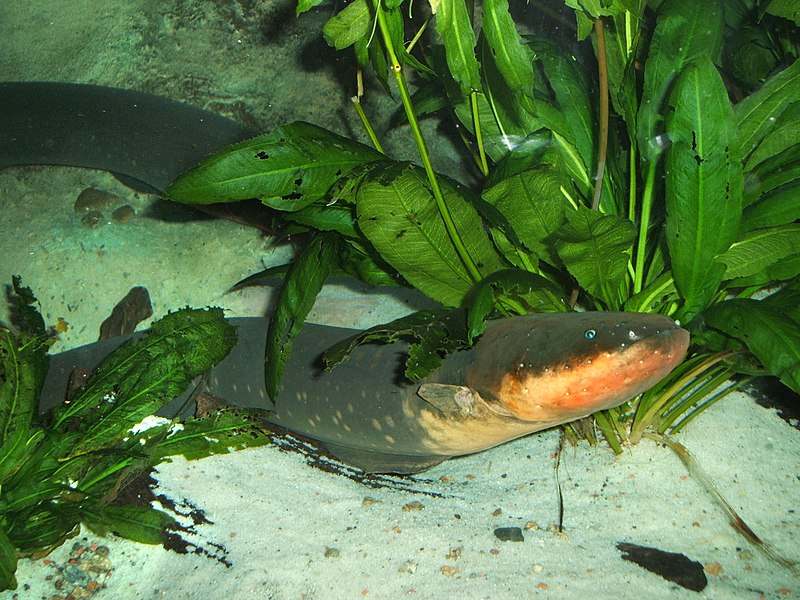Hello, Frank Indiviglio here. The natural behavior of fishes is so interesting that one can easily overlook the fact that they are capable learning in the true sense of the word (i.e. changing behavior in response to experience). Fishes are, after all, the most successful vertebrates in terms of species diversity (nearly 30,000 species have been described so far) – it would be odd indeed if they did not possess some capacity to profit from their experiences.
What All Fishes Learn
Some evidence of fish learning ability is so common that we usually do not appreciate it as such. From guppies to giant pacus, aquarium fishes of all types gather in anticipation of a meal when they see their owner approaching, or if the aquarium light is turned on. Seems simple to us, but these “simple” creatures are associating a large being (us) with food, something that instinct would never cause them to do.
Observations in the Field: Electric Eels
 As you can imagine, forming associations similar to “people=food” can increase hunting success in the wild.
As you can imagine, forming associations similar to “people=food” can increase hunting success in the wild.
Years ago I was involved in fish and anaconda research on a cattle ranch in Venezuela. The ranch owners periodically replenished their stock’s water supply by lifting a gate that separated the cattle-watering channels from a river. As soon as river water began splashing into the channels, the huge electric eels (which are actually knife fishes) that lived in the channels would appear at the gate. They had obviously learned that fishes and other prey were carried from the river to the channel with the flowing water.
Some of these brutes approached 6 feet in length. When grabbed in the mistaken believe that it was an anaconda, one large eel knocked a co-worker off his feet with its electrical discharge.
Home Training Devices
If you would like to experiment with training your own fishes, please check out our extensive line of fish-feeding products. Automatic fish feeders, feeding stations, feeding clips and feeding tongs can be used to duplicate some of experiments described below. Of course, the possibilities are limitless, so please write in with your own ideas.
Following are some other brief examples of piscivorous learning abilities:
Feeding Associations
Archerfish (which feed by shooting jets of water at terrestrial insects) that were fed immediately after a light bulb went on soon squirted water at the bulb, in anticipation of a meal. I find this particularly interesting because archers generally shoot only at moving objects.
I recall that archers under my care shot water at their exhibit door as I opened it – I thought they were reacting to the movement, but perhaps they associated the opening door with food.
Territorial Defense
Male bettas that were shown a rival male directly after a light bulb came on soon began displaying to the bulb, without seeing another fish.
Male sticklebacks perform an elaborate display when confronted by competitors. Researchers hid the competitors from view each time the males exhibited the “head down” portion of the display…in effect convincing the displaying fish that the interloper had fled. Realizing that this part of the display was very effective, the males soon began performing it earlier and more often than usual.
Next time I’ll relate more experiments that give evidence of fishes’ surprising learning abilities. Until then, please write in with your questions and comments. Thanks, Frank Indiviglio.
Further Reading
You can learn more about fish intelligence in the following article:
http://www.thefishsite.com/fishnews/10129/fish-found-to-have-human-learning-abilities and in The Everything Aquarium Book, which I wrote several years ago.
Electric eel image referenced from Wikipedia and originally posted by StevenJ.
Archerfish image referenced from Wikipedia and originally posted by Okapi.
 That Fish Blog – Aquarium Advice and Information
That Fish Blog – Aquarium Advice and Information
